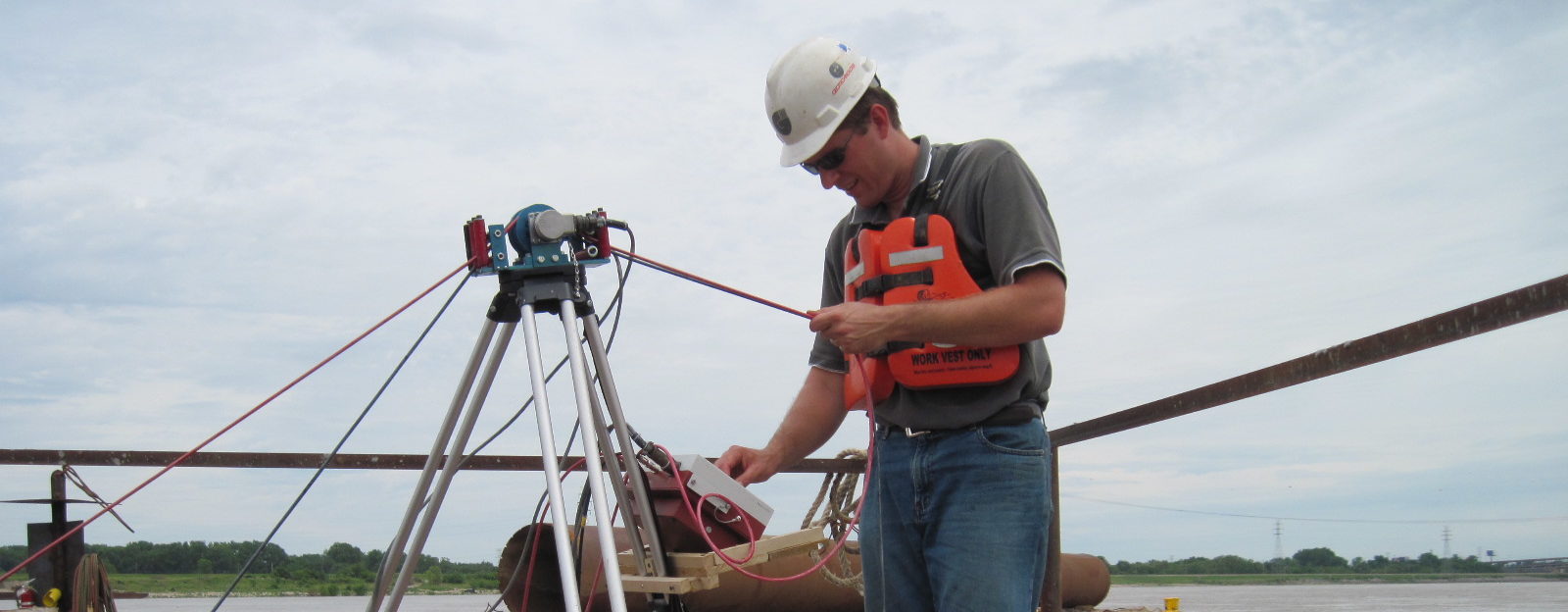Deep Foundation Testing
Geotechnology has been part of project team where Osterberg Load Cell (O-cell) drilled shaft testing has been performed on projects including Missouri Department of Transportation (New Mississippi River Bridge), Oklahoma Department of Transportation (Hollis Road Over Red River), Tennessee Department of Transportation (I-40/1-240 Interchange Ramp J), and Pinnacle Lumiere Casino and Hotel (17-story Tower). Unit skin friction and end-bearing values have been evaluated from the test results and have been used to refine the initial design values, where appropriate, often resulting in cost savings.
We have also performed Acoustic Televiewer scoping of rock cores, MiniSID base sediment measurements, Television Camera Inspections, Crosshole Sonic Logging and drilled shaft coring for many projects.
High-Strain Dynamic Pile Testing
High-Strain Dynamic Pile Testing is an economical method of evaluating the driving performance, integrity, and estimated axial capacity of driven piles. Dynamic measurements are recorded during pile driving using a Pile Driving Analyzer (PDA) with two strain gauges and two accelerometers that are mounted at least two pile diameters below the top of the pile. The PDA records and processes the strain and acceleration during driving and calculates the force, velocity, transferred energy, compression and tension stresses, integrity, and estimates the pile capacity. Measurements are transferred from the gauges to the PDA by either cables or wireless transmitters. Data quality is accessed and results interpreted real time by an experienced engineer in the field. To obtain a resistance distribution and capacity the collected data must be analyzed using signal matching techniques (i.e. CAPWAP).
High-Strain Integrity Testing is performed in accordance with ASTM D4945.
Low-Strain Integrity Testing
Low-Strain Integrity Testing can be used to determine the integrity of augercast piles and drilled piers/shafts. The test is limited to only identifying major defects such as necking, bulging, and soil inclusions. Data is collected using an accelerometer attached to the top or side of the pile, a hand operated instrumented hammer, and a Pile Integrity Tester (PIT). An impact wave is generated by tapping the pile top with the hammer. The accelerometer measures the impact wave and resulting reflections due to cross sectional changes along the pile and/or the pile toe. The location and general severity of a detected defect can be estimated from the magnitude and time of the early reflection. The system can also be used to evaluate the integrity and estimate the lengths of existing piles and piers.
Low-Strain Integrity Testing is performed in accordance with ASTM D5882.
Crosshole Sonic Logging (CSL)
Crosshole Sonic Logging (CSL) is a nondestructive test method for evaluating the integrity of a variety of concrete structures such as drilled shaft foundations and slurry walls. CSL can identify anomalies in drilled shaft/piers not identified through visual inspection or concrete coring. Currently, the largest application for CSL is the evaluation of concrete within drilled shaft foundations of bridges under construction.
Downhole Camera
The downhole camera eliminates manned entry for drilled shaft/pier observations where entry is not allowable due to project specifications and site conditions such as safety, contamination, shaft depth and water infiltration. The downhole camera also generates a video record of the shaft side walls and bottom. Downhole camera is the required method for drilled shaft observation by the Missouri Department of Transportation and many other DOT’s.

WE SPECIALIZE IN THE FOLLOWING DEEP FOUNDATION TESTING SERVICES
Static Load Tests
Crosshole Sonic Logging
Downhole Camera Observation
High-Strain Dynamic Testing
Low-Strain Integrity Testing
